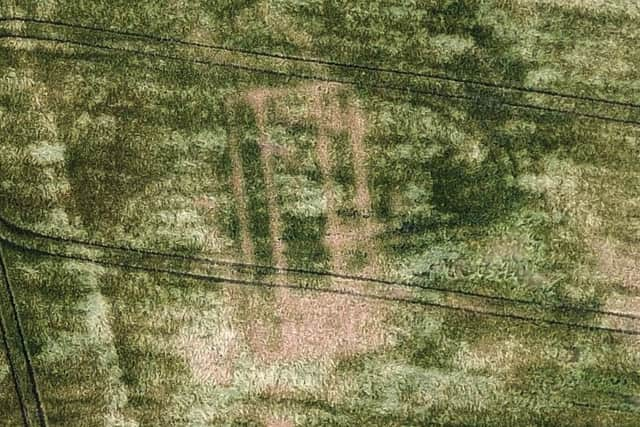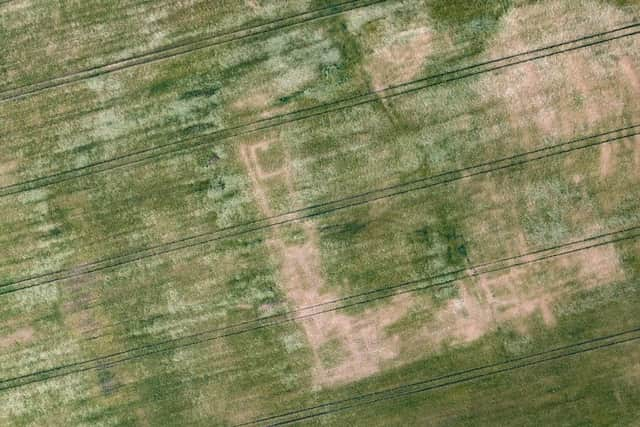How a farmer's grisly handshake led to the Broughton Roman villa
and live on Freeview channel 276
Leaving his tractor he found a hole had been made in the stone. He reached inside and pulled out a human bone.
His extraordinary discovery turned out to be a sarcophagus - the tomb of a high-status woman, who died in the third or fourth century. She was in her 30s, just over five feet tall and was buried in the lead-lined stone coffin.
Advertisement
Advertisement
As detectorist and historian Keith Wescott describes it was the key to his discovery of the Broughton Roman villa - one of the biggest ever found in Britain.


“The only bigger one is at Fishbourne Palace (West Sussex) - but that is a palace,” he said.
The future of this incredibly important archeological site is yet to be determined.
To evaluate the site, Oxford Archeology spent two weeks on the field in April, digging five trial trenches to guage the potential of the remains.
Advertisement
Advertisement
“Most of the other big courtyard villas were discovered in the 1800s and excavated using Victorian techniques,” said Mr Westcott.


“With this project, already we have been able to use modern technology like magnotometry, which acts like an ex-ray through the soil.”
The resulting subterannean plan shows walls, room outlines, ditches and other imagery that has told archeologists without digging an inch that this is an exceptional find.
The villa’s discovery also poses questions and has left historians revising their beliefs about the extent of Roman activity and involvement.
Advertisement
Advertisement
It is by any standards a vast building - not much smaller than Buckingham Palace.
“To my surprise the geophysics showed that on the off side of the villa was a fantastic, aisled building of 25m x 15m and when we excavated it, it had some of the best dressed stonework on the site.
“I think it’s probably a barn but possibly the most important part of their day-to-day life because these villas are so huge there was much more to it than just residential use.
“The villa would be the real centre of rural industry and agriculture and although the persons living there would have been very wealthy and powerful there would have been all sorts of things going on from the cooks to slaves - but grain was vitally important to them.
Advertisement
Advertisement
“Aisled halls were the forerunners of churches and if we had found this alone it would have been thrilling - a really significant find - but to have this set off the side of an enormous courtyard villa is just a dream come true,” he said.
“The more we’re finding out about this part of north Oxfordshire, we’re realising at the head of the triangle between Fosse Way, Akeman Street and Watling Street was a very important Roman area.”
The only comparably- sized courtyard villas are at Bignor, Chetworth, Bradon (Isle of Wight) and Woodchester.
If the universities being approached are unable to excavate the site the English Heritage and the Heritage Lottery Fund could be appealed to for the cost, along with Roman archaeology associations.
The cost of such a project could be in the region of £2m.
Advertisement
Advertisement
“This is our first chance to look at a full site using modern techniques and from a modern perspective. It is unique; unlike others, nothing has been built on top,” said Mr Westcott.
The villa’s accommodation includes a bath-house possibly with a domed roof and mosaics, a grand dining room, kitchens and living accommodation. It had under-floor and intra-wall heating. Its occupants would have been Romano-British.
To view some of the ancient artefacts found at the site click here.
To read more about the historic ruins click here.